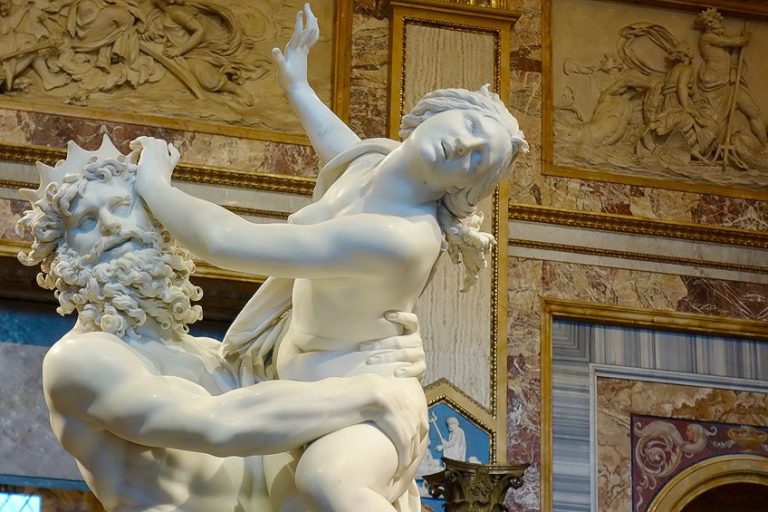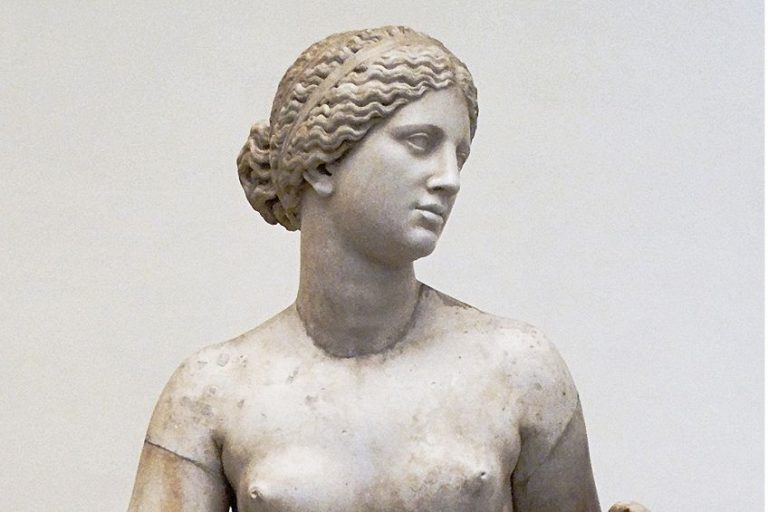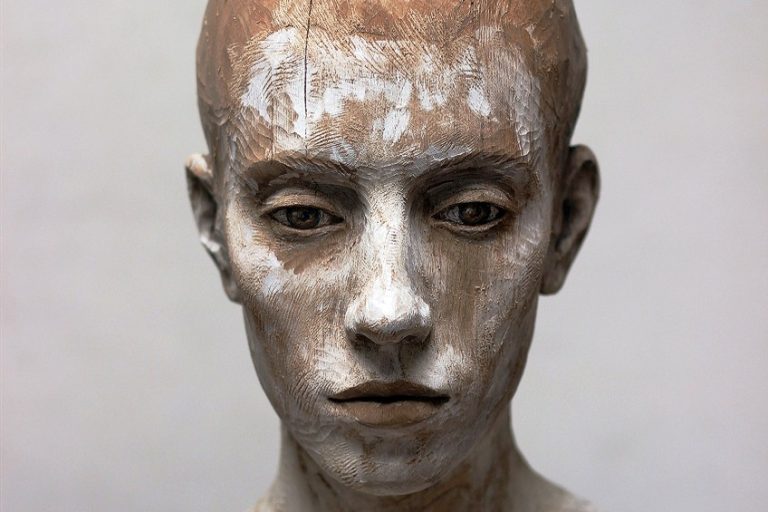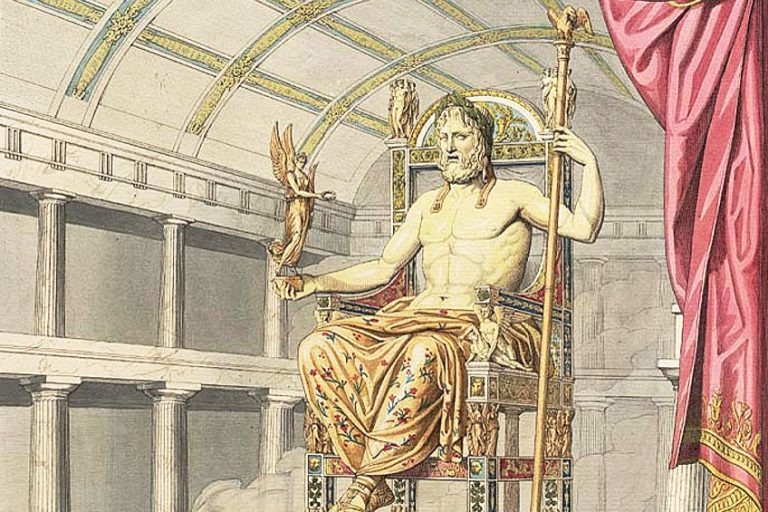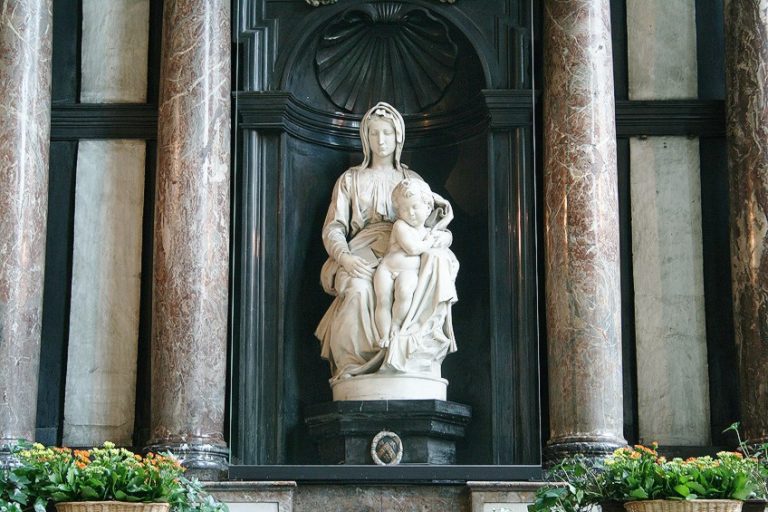Ludovisi Gaul Sculpture – Ancient Hero in Stone
The Ludovisi Gaul, also known as “The Galatian Suicide,” is a powerful and poignant ancient Roman marble sculpture that vividly captures the dramatic final moments of a Gallic warrior. This masterful work is a Roman copy of a lost Hellenistic original from the 3rd century BCE, attributed to the school of Pergamon. Commissioned to commemorate the victory of Attalus I of Pergamon over the Galatians, the sculpture showcases the skillful portrayal of human anatomy and emotion characteristic of the Hellenistic period. The Ludovisi Gaul’s expressive face, muscular body, and detailed depiction of his wounds not only evoke a deep sense of pathos but also highlight the valor and nobility of the fallen warrior, offering a profound reflection on the themes of heroism and mortality.
Key Takeaways
- The Ludovisi Gaul depicts a Gallic warrior and his dying wife.
- The statue is a Roman copy of a Greek original from the Hellenistic period.
- The sculpture is housed in Rome’s Museo Nazionale Romano.
Historical Context and Origin
| Artist | Copy attributed to Epigonus |
|---|---|
| Date Created | 2nd century AD |
| Medium | Marble |
| Genre | Statue |
| Period/Movement | Ancient Roman |
| Dimensions (m) | 2.11 |
| Series/Versions | Marble copy of the now-lost Greek bronze original |
| Where Is It Housed? | National Roman Museum, Palazzo Altemps, Rome, Italy |
| What It Is Worth | Not for sale; significant cultural and historical value |
The Ludovisi Gaul, often called “The Galatian Suicide,” is a striking ancient Roman statue that captures a dramatic moment in history. The sculpture shows a Gallic warrior committing suicide while holding his dying wife, a powerful symbol of valor and despair. This marble statue is believed to be a Roman copy of a lost Greek bronze original, merging artistry and storytelling in a way that has fascinated audiences for centuries. Originally created to commemorate the victory of Attalus I over the Galatians at Pergamon in 223 BCE, the Ludovisi Gaul stands out for its intense expression and dynamic composition.
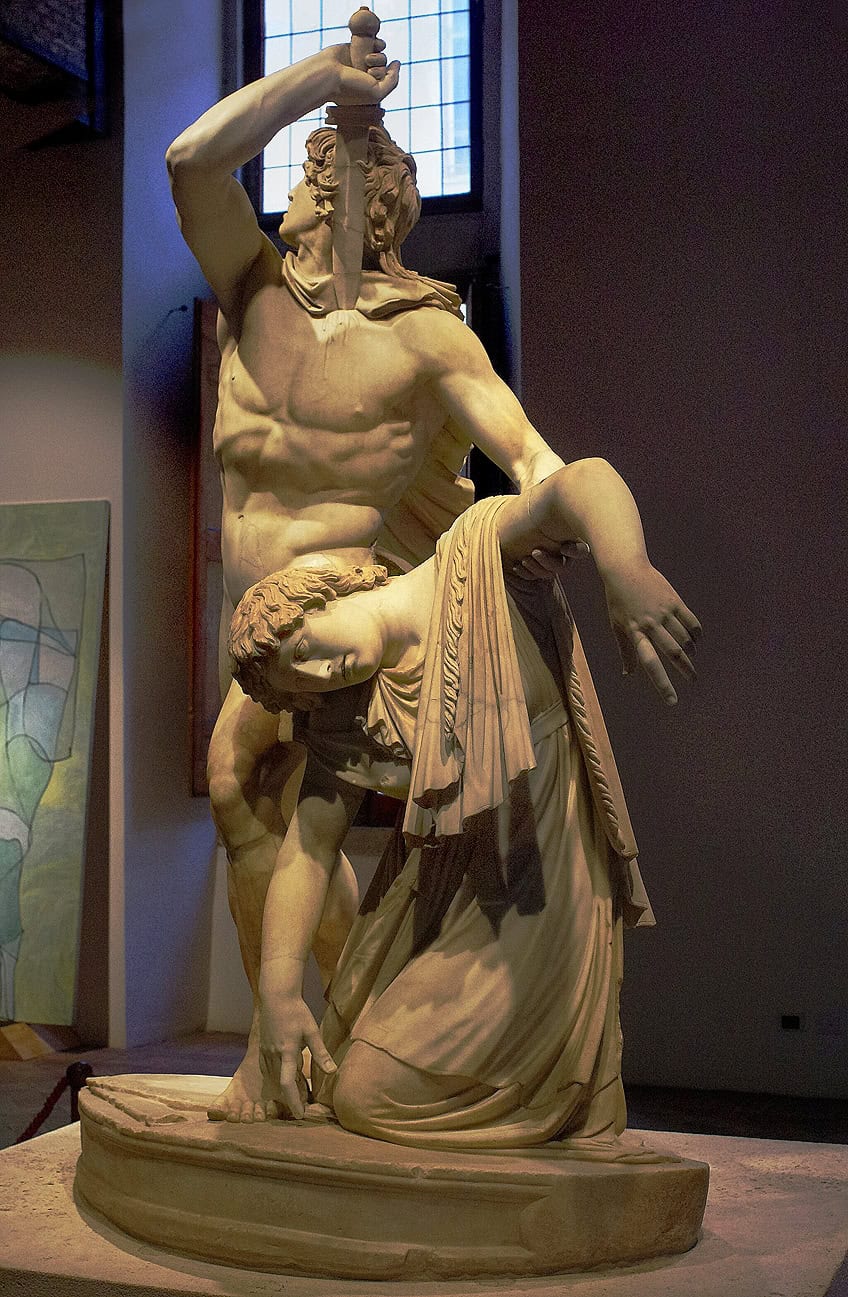
Found in the Palazzo Altemps in Rome, the statue is a significant piece of Classical art that demonstrates the skill and emotional depth of Hellenistic sculptors. Its detailed execution reveals much about the cultural exchanges between the Greeks and Romans. While the statue itself speaks volumes about the past, its preservation and display offer insights into how ancient arts have been valued and maintained through the ages. The Ludovisi Gaul is carefully housed in the Museo Nazionale Romano, where it continues to inspire and educate visitors about the grandeur of Antiquity.
Pergamon and the Hellenistic Period
During the Third Century B.C.E, the Hellenistic world saw significant cultural and artistic developments. Pergamon, a prominent city, became a key cultural hub. Attalus I, the ruler of Pergamon, achieved a notable victory over the Galatians. To commemorate this victory, several sculptures were commissioned, including depictions of defeated enemies.
The original Greek bronze sculptures, now lost, were created during this period of triumph.
These sculptures, including the one known through the Roman copy, the Ludovisi Gaul, celebrated Greek superiority and artistic excellence. The Sanctuary of Athena in Pergamon housed many such works, symbolizing the cultural importance of these achievements.
Julius Caesar and Villa Ludovisi
The Ludovisi Gaul found its way to Rome, highlighting the cultural exchange during the Roman Empire. Julius Caesar and other patrons admired Greek art, often collecting and commissioning copies. The Villa Ludovisi, a renowned site in Rome, became a repository for many such works.

The Ludovisi family, later owners of the villa, continued this tradition, preserving significant artworks. This sculpture’s presence in the Villa Ludovisi underscores the Roman fascination with Greek art and the blending of their cultural heritage.
Artistic Significance
The Ludovisi Gaul sculpture holds immense artistic value due to its unique stylistic features and connections to ancient Greek art. This section explores its style, comparisons to the original Greek bronze, and its relation to the Ludovisi Throne.
Stylistic Features of the Sculpture
The Ludovisi Gaul is a prime example of Hellenistic Baroque art. The sculpture vividly captures a dramatic moment as a Gallic warrior drives a sword into his chest while holding his dying wife. This dramatic action is depicted with lifelike details that highlight the tension and emotion of the scene.
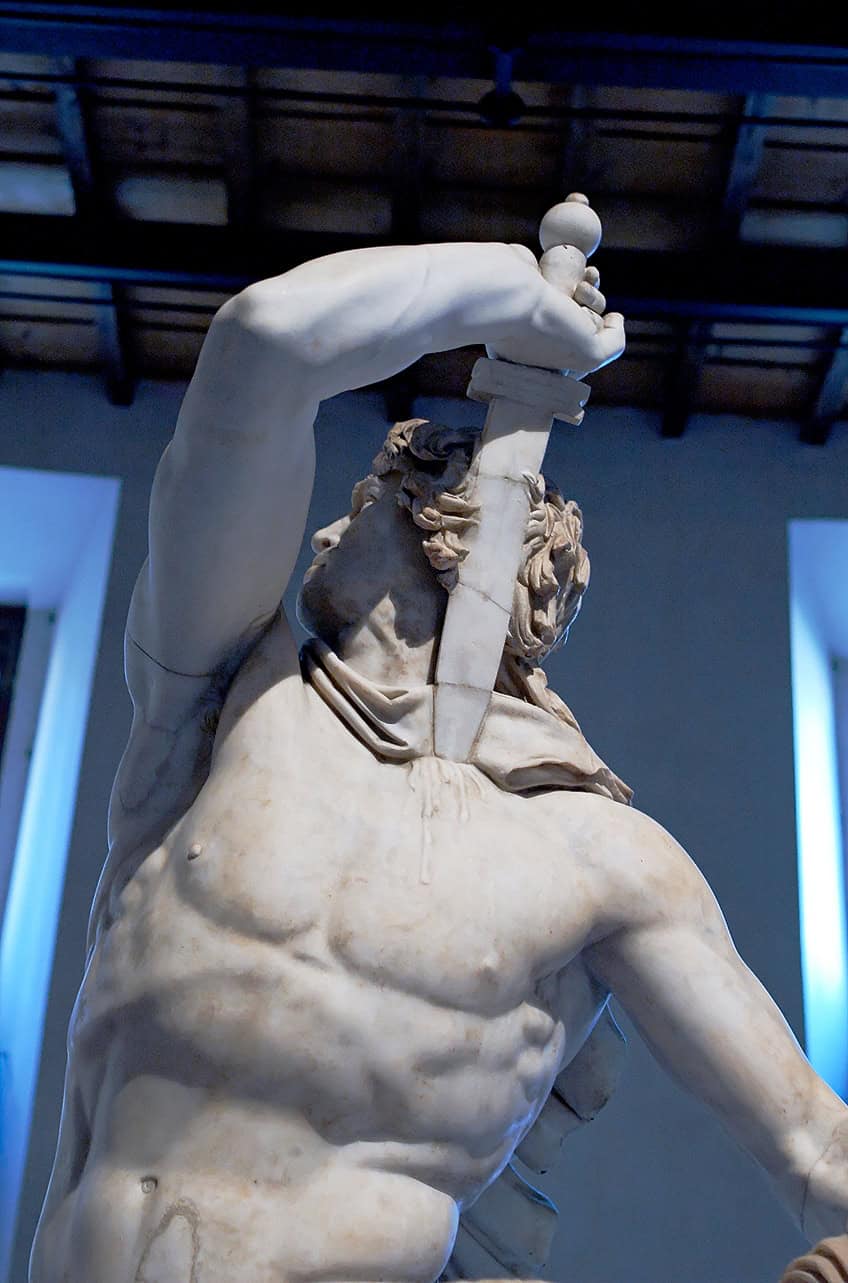
The marble material used adds a smooth, polished finish, enhancing the realism. The artist emphasized anatomical accuracy, from the warrior’s taut muscles to his pained expression, demonstrating advanced sculpting techniques. The intricate details in the warrior’s hair and clothing show exceptional craftsmanship and attention to detail.
Comparison to Greek Bronze Original
The Ludovisi Gaul is a Roman copy of a lost Greek bronze original from the 3rd century B.C.E. The original sculptures commemorated Pergamon’s victory over the Gauls and were likely housed in the Sanctuary of Athena at Pergamon. While the originals were bronze, the Roman versions transitioned to marble.
Bronze allowed for greater flexibility and dynamic poses in the original sculptures.
The Roman copies managed to retain much of this dynamism despite the material change. Compared to the original bronze works, the marble sculptures may lack the same fluidity but still effectively convey movement and emotion.
The Ludovisi Throne Connection
An interesting connection to the Ludovisi Gaul is the Ludovisi Throne. Although primarily distinct works, both pieces share a historical context within the Ludovisi Collection. The Ludovisi Throne, discovered at the same site, further highlights the rich accumulation of ancient Roman art.
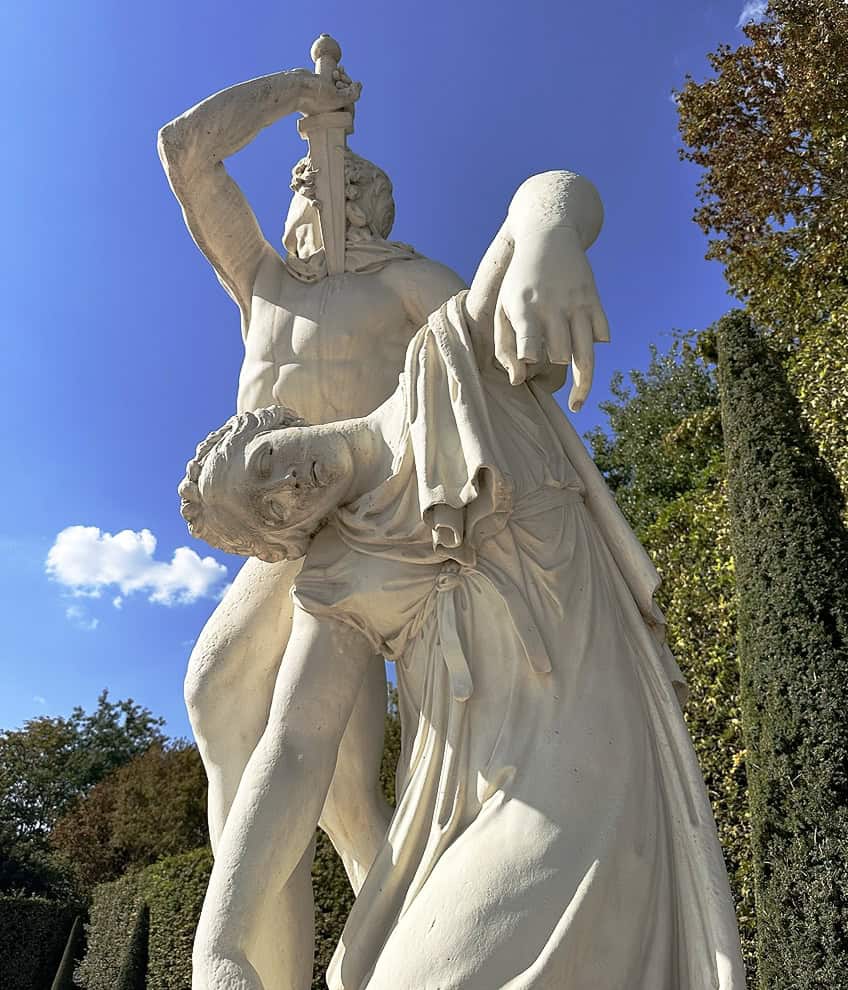
The throne’s reliefs and the Gaul sculpture both showcase the era’s artistic prowess and thematic focus. Art historians note that both works emphasize human emotion and dramatic storytelling, a hallmark of Hellenistic bronzes. While the Ludovisi Throne focuses on religious and ceremonial scenes, the Gaul sculpture vividly portrays a personal, tragic moment. The connection between these pieces underscores the cultural and artistic significance of the Ludovisi Collection, providing insight into ancient Roman and Greek influences on art.
Iconography and Interpretation
The Ludovisi Gaul sculpture portrays intense emotions and themes of defeat and death. The artwork includes significant signs of pain, dignity, and a striking representation of a tragic moment in history.
Depiction of Pain and Dignity
The sculpture captures a Gallic man in his final moments. He is depicted plunging a sword into his chest, an act known as “The Galatian Suicide.” This figure holds the dying body of his wife, embodying a dramatic mix of pain and dignity. His face shows agony and resolve, highlighting the emotional strength amid despair. The artist emphasizes the wound, illustrating the physical pain while still reflecting the man’s pride and bravery.
This duality is central to Hellenistic art, where human emotions and expressions are vividly rendered.
Symbolism of Defeat and Death
The Ludovisi Gaul is a powerful symbol of defeat and death. The act of suicide instead of surrender is a poignant statement about the Gallic man’s choice to die with honor rather than live in shame. The figure stands as a defeated enemy, emphasizing the themes of loss and the high stakes of ancient warfare. His action intensifies the drama, showing a preference for self-inflicted death over capture.

This portrayal underlines the high value placed on honor and courage in ancient Greek and Roman cultures. The sculpture does not just depict a man’s death, but a profound statement on the culture’s views on dignity, strength, and the ultimate sacrifice in the face of defeat.
Conservation and Display
The Ludovisi Gaul sculpture has a fascinating journey through history that includes significant periods in prominent museums and modern exhibitions.
From the Capitoline Museum to Palazzo Altemps
Initially, the Ludovisi Gaul was housed in the Musei Capitolini. Over time, it was decided that a more appropriate location would be Palazzo Altemps. This decision was motivated by the museum’s focus on ancient art and its ability to provide an appropriate context for the sculpture.
In its new home, the statue is part of the Museo Nazionale Romano.
It resides among other significant Roman marble copies, giving visitors a well-rounded view of Roman art’s grandeur. The move to Palazzo Altemps enhances its display, emphasizing the cultural and historical importance of the piece.
Museo Nazionale Romano and Modern Exhibition
The Ludovisi Gaul has been featured in several modern exhibitions, reflecting its lasting significance. Notably, this includes exhibitions like Pergamon and the Hellenistic Kingdoms of the Ancient World held at The Metropolitan Museum of Art. These exhibitions often discuss the piece’s role and influence on Hellenistic art.
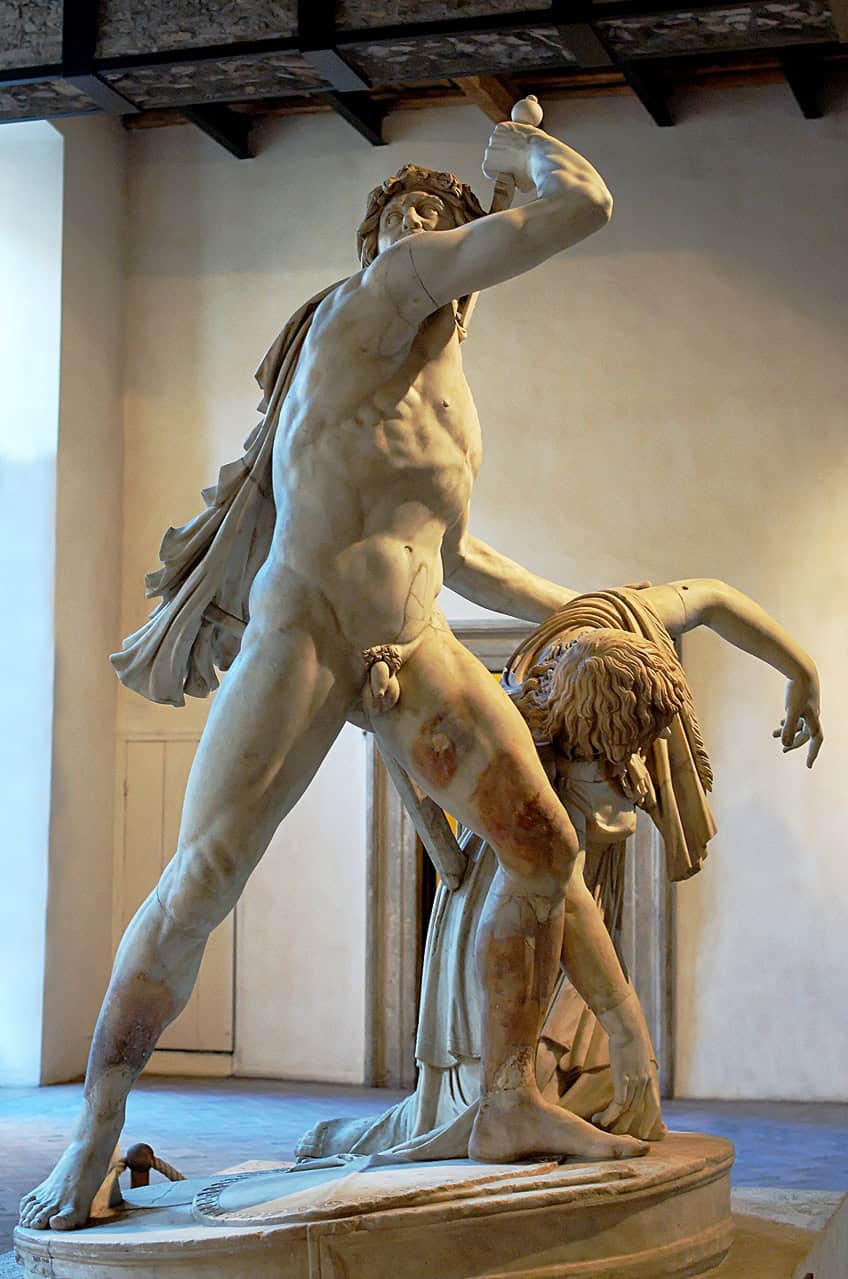
The sculpture’s display setup also aims to educate visitors about its historical context. Museums use it as a teaching tool, showing Roman copies’ role in preserving Greek originals and offering insights into artistic techniques and historical narratives from Turkey to Rome. Overall, the continued display and conservation efforts of the Ludovisi Gaul in notable institutions ensure that its legacy and educational value endure.
The Ludovisi Gaul remains a testament to the artistic and cultural achievements of the ancient world, encapsulating the ethos of Hellenistic art through its dynamic portrayal of emotion and realism. This remarkable sculpture not only commemorates a significant historical event but also transcends its immediate context to evoke universal themes of heroism, suffering, and the human condition. Its enduring appeal and influence on subsequent generations of artists underscore its status as a masterpiece of classical art. As we continue to study and admire the Ludovisi Gaul, we are reminded of the timeless power of art to capture and convey the depths of human experience.
Frequently Asked Questions
What Is the Historical Context Behind the Ludovisi Gaul Sculpture?
The Ludovisi Gaul sculpture dates back to the 1st or 2nd century C.E. It is a Roman marble copy of a 3rd-century B.C.E. Greek bronze statue. It commemorates the defeat of the Gauls at Pergamon, likely depicting a moment of tragic heroism.
How Does the Ludovisi Gaul Represent Hellenistic Art?
The Ludovisi Gaul is a powerful example of Hellenistic art, showcasing dynamic motion and emotional intensity. The detailed musculature and dramatic poses are emblematic of this art period. The sculpture compels viewers to walk around it, engaging them from all angles.
What Are the Distinguishing Features of the Dying Gaul Statue?
The Dying Gaul differs from the Ludovisi Gaul but shares some similarities. It depicts a wounded Gallic warrior in his final moments. Both statues highlight the bravery and plight of their subjects with realistic body forms and expressive faces.
How Has the Ludovisi Gaul Influenced Modern Perceptions of Gallic Culture?
The Ludovisi Gaul has shaped modern interpretations of Gallic heroism and tragedy. Its portrayal of a warrior choosing death over dishonor resonates with contemporary concepts of valor. This sculpture has also inspired artists and scholars to explore Gallic themes in various forms of art and literature.
Isabella studied at the University of Cape Town in South Africa and graduated with a Bachelor of Arts majoring in English Literature & Language and Psychology. Throughout her undergraduate years, she took Art History as an additional subject and absolutely loved it. Building on from her art history knowledge that began in high school, art has always been a particular area of fascination for her. From learning about artworks previously unknown to her, or sharpening her existing understanding of specific works, the ability to continue learning within this interesting sphere excites her greatly.
Her focal points of interest in art history encompass profiling specific artists and art movements, as it is these areas where she is able to really dig deep into the rich narrative of the art world. Additionally, she particularly enjoys exploring the different artistic styles of the 20th century, as well as the important impact that female artists have had on the development of art history.
Learn more about Isabella Meyer and the Art in Context Team.
Cite this Article
Isabella, Meyer, “Ludovisi Gaul Sculpture – Ancient Hero in Stone.” Art in Context. June 27, 2024. URL: https://artincontext.org/ludovisi-gaul-sculpture/
Meyer, I. (2024, 27 June). Ludovisi Gaul Sculpture – Ancient Hero in Stone. Art in Context. https://artincontext.org/ludovisi-gaul-sculpture/
Meyer, Isabella. “Ludovisi Gaul Sculpture – Ancient Hero in Stone.” Art in Context, June 27, 2024. https://artincontext.org/ludovisi-gaul-sculpture/.




